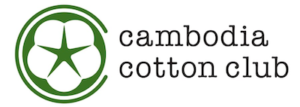The issue of toxic clothing in China was also broadcast on China's state-run broadcaster (CCTV). When I once made a program about China's state-run broadcasting company, the public relations person who was present during the filming laughed and told me, "There are no facts in our country other than what was broadcast on CCTV's 7:00 pm news.
The fact that China is reporting on "children's clothing poisoning" on a rather large scale suggests that the Chinese government could not tolerate it.
A study of the content of the Chinese state-run broadcasts showed the following.
・A consumer group in Beijing tested 47 samples of clothing made in China and found formaldehyde and carcinogens.
(This substance is regulated in Japan, the U.S., Europe, and other countries because it is harmful to the human body. When in aqueous solution, it becomes formalin, which is used as an antiseptic and disinfectant in many fields, including food.)
・Formaldehyde in one sample was twice the level considered hazardous. Shrink-proofing agents also exceeded regulatory limits.
・The reason for the investigation was that consumers who purchased children's clothing complained of skin rashes and severe itching on their children's skin.
・Forty-seven samples were randomly selected from Internet stores, outlet stores, and shopping malls, and 21 samples were found to contain drugs harmful to the human body that exceeded the standards.
In addition to the above, there is a whole list of toxic specific aromatic amines and other difficult chemicals that are increasingly regulated in Japan. The purpose for which these toxic chemicals are used is to keep dyed fabrics beautiful and colorful for a long period of time and to make them look good.
In addition to harmful dyes, the list of difficult chemical terms includes synthetic surfactants, anti-dust mite agents, anti-fading agents, shrink-proofing agents, fabric softeners, processing agents, bleaching agents, synthetic chemical glues, and waterproofing agents, and they cause skin cancer, allergies, asthma, and itchy eyes, nose, and throat.
If this content was broadcast on Chinese state-run TV, I imagine that there are some very serious health problems in the area.
In fact, China's State Administration of Quality Inspection and Quarantine has distributed a "Guide to Children's Clothing," which provides detailed instructions on not buying clothing with fluorescent paint, dark colors, or printed patterns, due to the high possibility of harmful chemical residues.
In part, "Toxic substances in children's clothing can enter the body via mouth and hand contact. The threat to children and pregnant women is especially serious."
was written.
Before examining the area around the garment factories, it is clear from translating and reading the Chinese papers that the central government is quite concerned about the crisis. What exactly is going on around the factories that are producing the products?
( to be continued )
